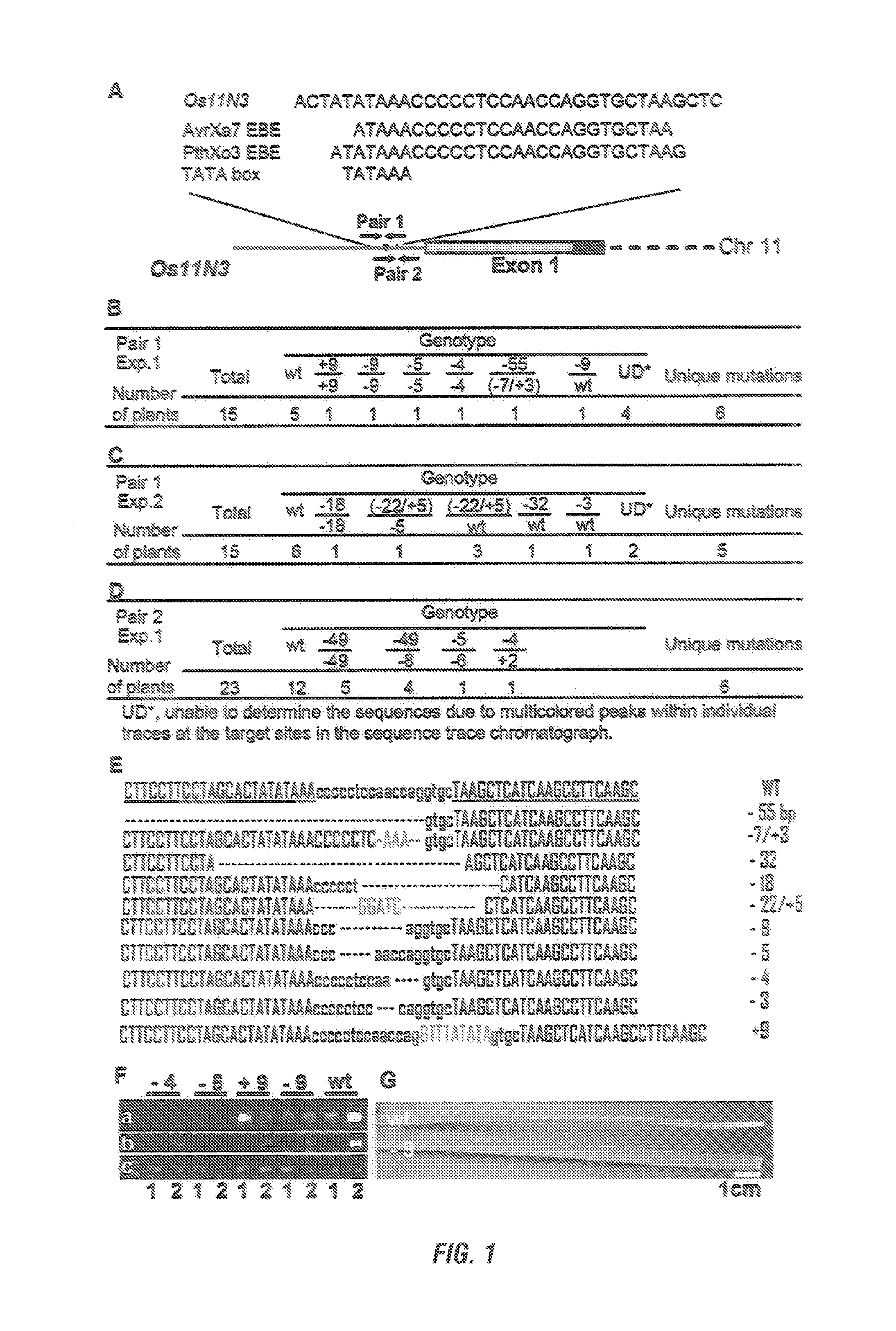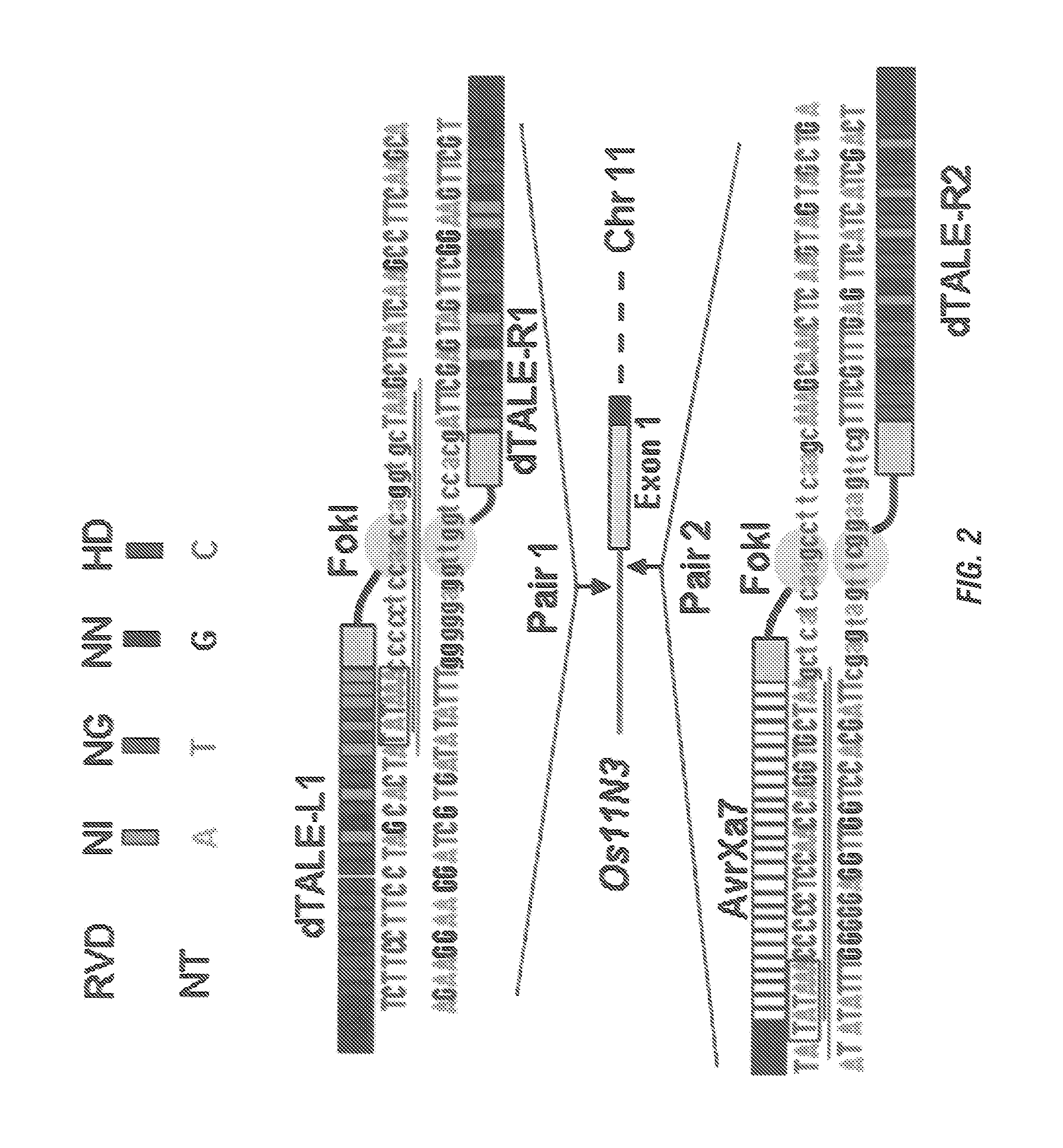Genetically modified plants with resistance to xanthomonas and other bacterial plant pathogens
a technology of xanthomonas and other bacterial plant pathogens, applied in the field of pathogen control, can solve the problems of destroying an entire crop, destroying plants, and typical knockout strategies being inappropriate, and achieve the effect of preventing induction of expression
- Summary
- Abstract
- Description
- Claims
- Application Information
AI Technical Summary
Benefits of technology
Problems solved by technology
Method used
Image
Examples
example 1
[0170]Transcription activator-like effectors (TALEs) of Xanthomonas oryzae pv. oryzae (Xoo) contribute to pathogen virulence through transcriptionally activating the rice disease susceptibility (S) genes. TALE nucleases (TALENs), the hybrid proteins of native or customized TAL effectors and the DNA cleavage domain of FokI, have been used to create intact yeast and animals whose genomes contain site-specific modifications. TALEN-mediated genome editing has not been demonstrated in plants. Here we exploit the paradigm of TALE / S-gene interaction using TALENs to edit the S gene in a way that renders it no longer responsive to the cognate TAL effector and, thus, confers resistance to bacterial blight of rice, a devastating disease in a crop that feeds half of the world's population.
[0171]We sought to target Os11N3, a developmentally regulated S gene, whose induction by TAL effector AvrXa7 or PthXo3 is required for bacterial blight disease in rice. The Os11N3 promoter contains a region wh...
example 2
[0194]In the previous example, two pairs of TALENs were employed to modify the overlapping EBEs in the promoter of Os11N3 (also called OsWEET14) bound by two TAL effectors AvrXa7 and PthXo3. Rice plants homozygous for the transmittable OsSWEET14 EBE mutations were resistant to AvrXa7- and PthXo3-dependent Xoo strains, and some rice lines were free of transgenes for TALENs and transformation marker. Those rice lines, however, were susceptible to the PthXo1-dependent Xoo strain PXO99 as the inducibility of OsSWEET11 by PthXo1 retained intact. Thus, we sought to address the questions such as whether TALENs could be useful to edit the function of other genes in rice, whether multiple (at least the two known) SWEET genes vulnerable to blight disease could be all edited sequentially to achieve broad disease resistance but not disrupt their normal functions.
PUM
| Property | Measurement | Unit |
|---|---|---|
| Fraction | aaaaa | aaaaa |
| Electrical resistance | aaaaa | aaaaa |
Abstract
Description
Claims
Application Information
 Login to View More
Login to View More - R&D
- Intellectual Property
- Life Sciences
- Materials
- Tech Scout
- Unparalleled Data Quality
- Higher Quality Content
- 60% Fewer Hallucinations
Browse by: Latest US Patents, China's latest patents, Technical Efficacy Thesaurus, Application Domain, Technology Topic, Popular Technical Reports.
© 2025 PatSnap. All rights reserved.Legal|Privacy policy|Modern Slavery Act Transparency Statement|Sitemap|About US| Contact US: help@patsnap.com



